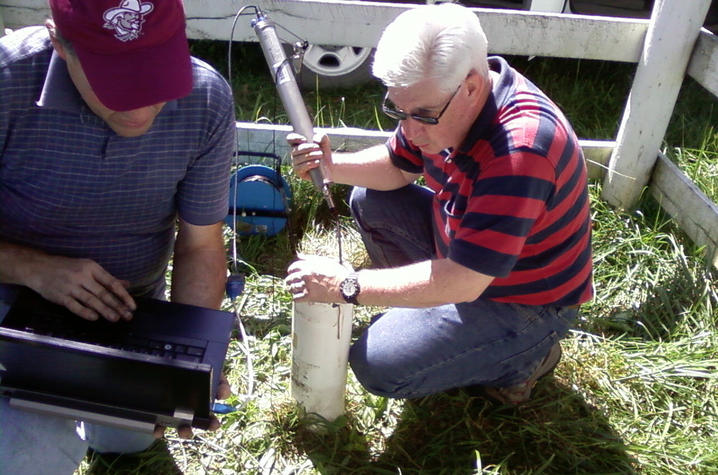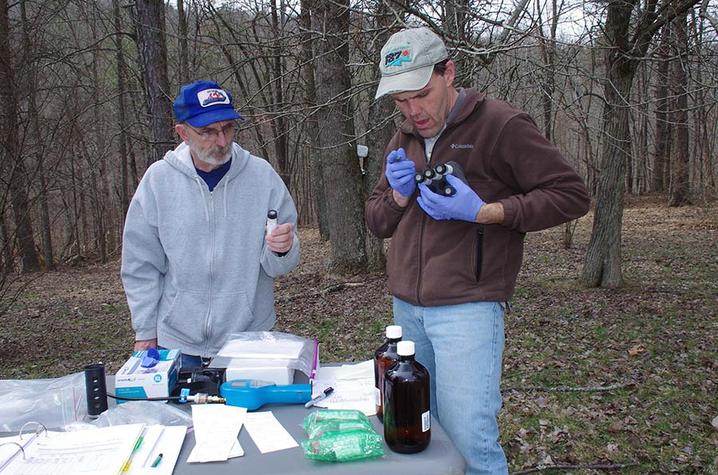Focus Beneath the Surface During Groundwater Awareness Week
LEXINGTON, Ky. (March 6, 2017) ― This week, March 5-11, is National Groundwater Awareness Week, a perfect time to learn more about the water beneath Kentucky’s surface. The National Groundwater Association, which sponsors the week, has an educational website with information for the general public, well owners and educators. This is important, because the NGWA has determined that 44 percent of the U.S. population depends on groundwater for its drinking-water supply, whether from a public source or private well.
The Kentucky Geological Survey (KGS) at the University of Kentucky conducts research and collects data to better characterize the state’s aquifers and improve our understanding of its groundwater resources. The data are made available to the public through published reports and the Kentucky Groundwater Data Repository. The repository provides the public with access to information on more than 102,000 wells and 5,200 springs across Kentucky, including locations, well depths and water levels, along with results from a wide variety of water-quality analyses. These analyses measure the concentrations of substances ranging from metals and organic compounds to herbicides and pesticides in water samples collected by KGS, various state and federal agencies, and other sources, over many years.
KGS scientists in the Water Resources Section have been involved in a number of significant regional and local groundwater research and public service projects in recent years, including one project conducted in 2016 that collected samples from 51 domestic and public water-supply wells in a multicounty area in Northeastern Kentucky. As horizontal drilling and hydraulic fracturing technology to extract oil and gas in this area has increased, so have the public’s concerns about possible impacts to the environment, especially degradation of shallow freshwater aquifers. Given the likely anticipated increase in energy-extraction activities in Kentucky, projects such as this are crucial to help monitor possible changes in the quality of the groundwater, address the public’s concerns about the environment, and ensure protection of the state’s most important groundwater resources.
Other KGS research projects are being carried out to assess the availability and long-term sustainability of groundwater that Kentucky communities depend on as a source of public water. For example, an aquifer test was conducted in Elizabethtown in late 2015 to gather information to help the Hardin County Water District No. 2 better utilize and manage the withdrawal of groundwater from public water-supply wells. And in 2016, KGS began collecting discharge and water-quality data from a karst spring used as a source of public water by the Hardin County Water District No. 1, to provide the utility with accurate information needed to ensure best management of the spring as a critical groundwater resource.
KGS is in the process of building the Kentucky Groundwater Observation Network, a statewide network of water-level observation wells to assess groundwater availability and continuously track changes in groundwater recharge and storage in parts of the state where groundwater withdrawals are relatively extensive and are expected to increase in coming years. Existing water wells are being identified and tested for inclusion in the network, and wells selected for long-term water-level monitoring are being equipped with automatic water-level recording equipment. This equipment will allow KGS scientists to collect detailed records of fluctuations in groundwater level caused by changes in precipitation, withdrawals from nearby water wells, and other factors.
For more information on groundwater in Kentucky, fact sheets are available at the survey’s website on county groundwater resources, the Groundwater Data Repository, and water resources in Kentucky.






